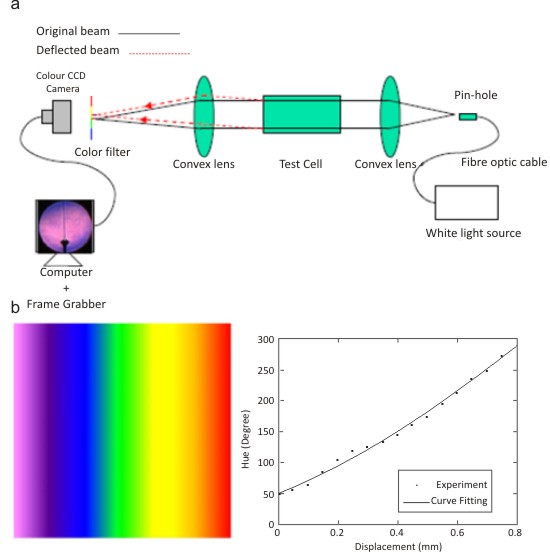The rainbow filter is one-dimensional with color variation in one direction. The changes in color
are arranged in the direction in which the density gradients are to be observed. Image formation on the
filter is caused by the light deflected due to the non-uniformities in the refractive index field of the test
region. For extracting quantitative information from the color images, HSI (hue-saturation-intensity)
representation of color can be selected. Hue is obtained from direct transformation of the RGB
tristimulus values (discussed in module 6). The color filter is calibrated by traversing the filter mounted on a micrometer
assembly with simultaneous acquisition of the filter images. The calibration data relates filter
displacement to change in hue. In a convection experiment, the change in hue at a point is converted into
beam deflection by reference to the calibration curve. Figure 1(b) shows a sample one dimensional color
filter and the associated calibration curve. Minor deviation of the calibration curve from a truly linear
behavior can be attributed to the errors during image processing and development of the filter on the
photographic film.

Figure 1: (a) Schematic diagram of a color schlieren deflectometry setup and (b) an image of the 1-D rainbow filter with the corresponding hue-displacement calibration curve.
|